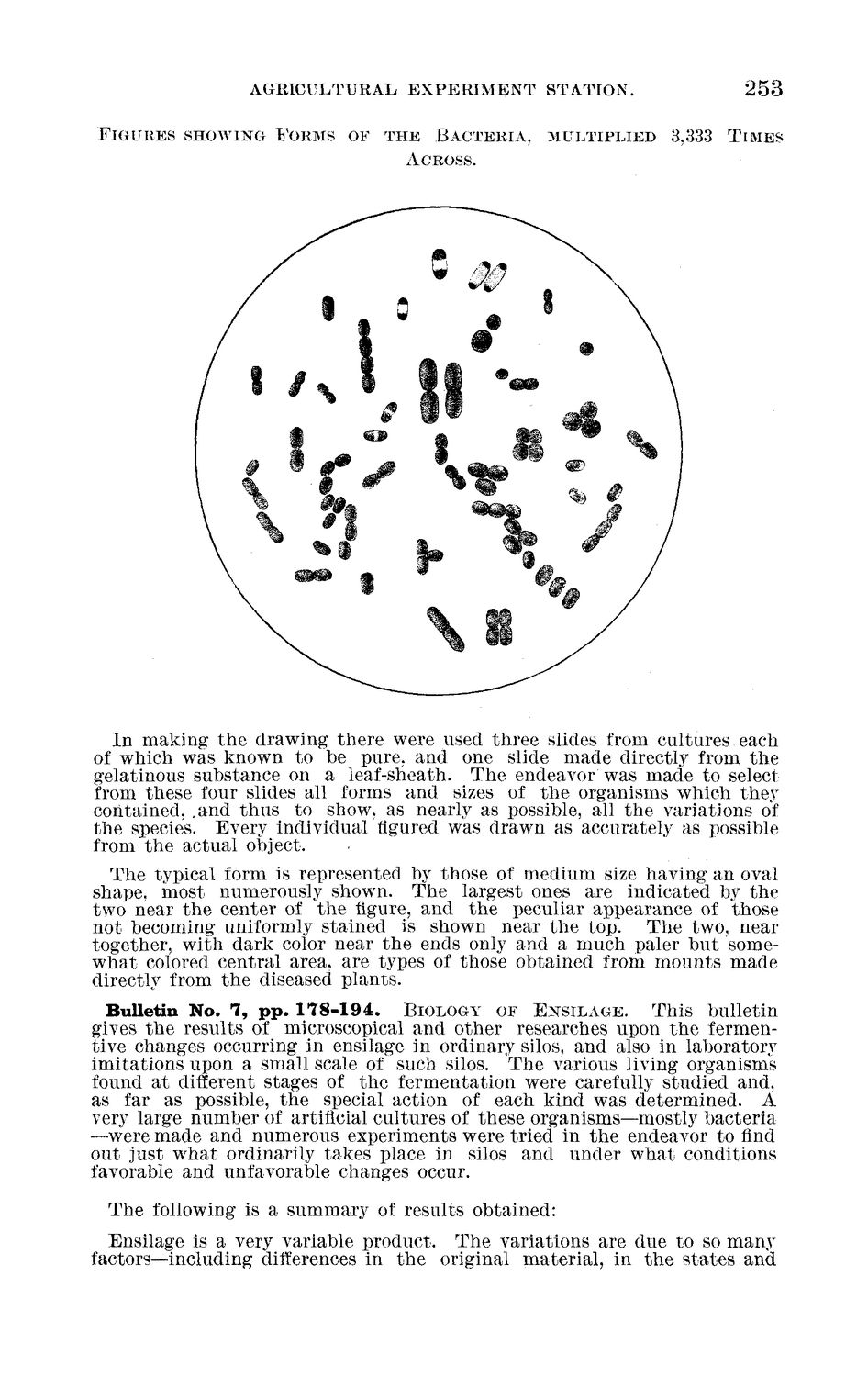| |
| |
Caption: Board of Trustees Minutes - 1890
This is a reduced-resolution page image for fast online browsing.

EXTRACTED TEXT FROM PAGE:
AGRICULTURAL EXPERIMENT STATION. F I G U R E S SHOWING FORMS OF THE BACTERIA, MULTIPLIED 253 3,333 T I M E S ACROSS. In making the drawing there were used three slides from cultures each of which was known to be pure, and one slide made directly from the gelatinous substance on a leaf-sheath. The endeavor was made to select from these four slides all forms and sizes of the organisms which they contained, .and thus to show, as nearly as possible, all the variations of the species. Every individual figured was drawn as accurately as possible from the actual object. The typical form is represented by those of medium size having an oval shape, most numerously shown. The largest ones are indicated by the two near the center of the figure, and the peculiar appearance of those not becoming uniformly stained is shown near the top. The two, near together, with dark color near the ends only and a much paler but somewhat colored central area, are types of those obtained from mounts made directly from the diseased plants. Bulletin No. 7, pp. 178-194. BIOLOGY OF ENSILAGE. This bulletin gives the results of microscopical and other researches upon the fermentive changes occurring in ensilage in ordinary silos, and also in laboratory imitations upon a small scale of such silos. The various living organisms found at different stages of the fermentation were carefully studied and, as far as possible, the special action of each kind was determined. A very large number of artificial cultures of these organisms—mostly bacteria —were made and numerous experiments were tried in the endeavor to find out just what ordinarily takes place in silos and under what conditions favorable and unfavorable changes occur. The following is a summary of results obtained: Ensilage is a very variable product. The variations are due to so many factors—including differences in the original material, in the states and
| |